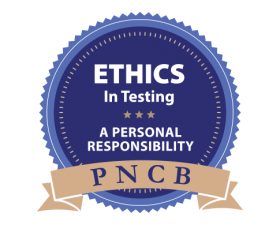CPNP-PC Exam Resources
The Certified Pediatric Nurse Practitioner - Primary Care (CPNP-PC) exam is 3 hours and asks 175 multiple-choice questions based on categories in the content outline, an essential study reference. Create a personal study plan and prepare using the resources below.
The PNCB Board of Directors does not endorse the content of or approve specific training programs, study guides, review courses, or other examination preparation products. Purchase of preparatory materials for PNCB certification examinations is not required and do not guarantee a passing score on the examinations.
The content outline/test blueprint is your #1 tool to start your study. It describes all subject areas covered by the exam and questions per category.
PNCB certification exams are comprehensive tests, so be sure to study all areas of the content outline.
Tip! This exam tests your ability to apply knowledge and use critical thinking skills to determine one best answer among answer choices.
The current content outline is based on our 2022-2023 Job Task Analysis research. This routine, required research ensures that exam content accurately represents current pediatric primary care nurse practitioner practice in the U.S.
Content for the updated exam has not changed considerably, and you do not need to study differently. After the JTA, a passing point determination follows construction of new exam forms and establishes minimum passing scores using standard psychometric methods, such as Item Response Theory and Modified-Angoff scoring. Learn more about the exam form development process.
See full details about the latest 2022-2023 study in our executive summary and 2022-23 CPNP-PC Exam PowerPoint.
We recommend you use ONE pediatric textbook that you are familiar with to review for the exam. This text should also focus on the subject areas covered by the exam content outline.
Our primary care exam item writers and committee members have found the most current edition of the following references useful for their review. Additions or deletions to this list are a result of exam committee member input and anonymous faculty surveys.
You do not need to study all the references listed below. PNCB does not endorse nor have any proprietary relationship with any of the following textbooks or their publishing companies.
TEXTBOOKS AND RELATED RESOURCES
Bright Futures: Guidelines for Health Supervision of Infants, Children, and Adolescents
By AAP, JF Hagan Jr, JS Shaw, PM Duncan
BURNS’ Pediatric Primary Care
By DL Garzon, M Dirks, M Driessnack, KG Duderstadt, NM Gaylord
CURRENT Diagnosis & Treatment: Pediatrics
By M Bunik, WW Hay Jr, MJ Levin, MJ Abzug
Developmental and Behavioral Pediatrics
By RG Voight, MM Macias, SM Myers, CD Tapia
Hurwitz Clinical Pediatric Dermatology: A Textbook of Skin Disorders of Childhood and Adolescents
By AS Paller, AJ Mancini
Lexicomp Pediatric & Neonatal Dosage Handbook
By American Pharmacists Association
Neinstein’s Adolescent and Young Adult Health Care: A Practical Guide
By DK Katzman, CM Gordon, ST Callahan, RJ Chung, A Joffe, SL Rosenthal, ME Trent
Nelson Textbook of Pediatrics
By RM Kliegman, JW St. Geme III, NJ Blum, RC Tasker, KM Wilson, AM Schuh, CL Mack (Eds)
Pediatric Dermatology: A Quick Reference Guide
By AJ Mancini, DP Krowchuk
Pediatric Physical Examination: An Illustrated Handbook
By KG Duderstadt, VF Keeton
Pediatric Primary Care: Practice Guidelines for Nurses
By B Richardson
Red Book 2024-2027: Report of the Committee on Infectious Disease
By American Academy of Pediatrics (AAP)
Zitelli and Davis’ Atlas of Pediatric Physical Diagnosis
By BJ Zitelli, SC McIntire, AJ Nowalk, J Garrison
EVIDENCE-BASED PRACTICE / PROFESSIONAL ROLE
Hamric & Hanson’s Advanced Practice Nursing: An Integrative Approach
By MF Tracy, ET O’Grady, SJ Phillips
Nurse Practitioner’s Business Practice and Legal Guide
By C Buppert
OTHER REFERENCES
Questions on the CPNP-PC exam may be referenced to national clinical practice guidelines or standard recommendations that are specific to pediatric primary care. Some examples of organizations that publish these types of guidelines or recommendations may include:
- American Academy of Pediatrics (AAP)
- American Heart Association (AHA)
- American College of Obstetricians and Gynecologists (ACOG)
- Centers for Disease Control (CDC)
- Infectious Disease Society of America (IDSA)
- North American Society for Pediatric Gastroenterology, Hepatology & Nutrition (NASPGHAN)
- NIH: National Heart, Lung, and Blood Institute (NHLBI)
CPNP-PC Practice Tests offer in-depth rationale for right answers to enhance critical thinking. Score reports can help you focus studies.
The cost is $52 per module. You receive unlimited attempts of 75 questions for 150 days.
Looking for more exposure to CPNP-PC exam topics? PNCB also offers a Primary Care Exam Drill containing 50 multiple-choice questions (answers only, no rationales). The cost is $26.
You are taking a big step in your career and preparing for a Pediatric Nursing Certification Board (PNCB) certification exam. We hope you find the information about Preparing to Take your Board Exam helpful.
What review course should I take? Which books are the best? Do you offer a review course?
The PNCB can't conduct a review course because this would be a conflict of interest. We also can't endorse a specific review course or book, but we do recommend you consider the following when selecting a course or title:
- How are the instructors or authors prepared? Do they have rigorous academic credentials? Do they hold the credential you seek? What about their practice experience?
- Are the topics covered consistent with the exam's content outline?
- Do the books offer practice questions after each chapter?
- Does the course offer testimonials? If so, evaluate the comments offered by your peers.
- Does the review course ask for feedback? Do they post survey results on their website?
- Talk to others who have taken a specific review course. Were they satisfied?
You may also want to check your membership organization website for books that are recommended. We hope this gives you an idea of things to look for as you make your decisions.
Sample Questions for the CPNP-PC Exam
Please note that these are only sample question types you may encounter and do not reflect the scope or degree of difficulty of the exam. The answer key is located at the bottom of the page. For more questions with correct answer rationale, consider PNCB's practice tests for your exam.
Select the one answer that is best in each case.
Sample Questions
1. The benefit of fluoride is achieved through which of the following mechanisms?
2. A toddler presents with fever, frequent barking cough, and inspiratory stridor noted only when crying. Vital signs are normal, and the child is alert and cooperative. Which of the following medications is MOST appropriately ordered?
3. A 14 year old female who is overweight presents with constipation and fatigue. Physical exam reveals notably delayed sexual development, short stature, brittle hair, and sallow, coarse skin. Which of the following laboratory studies are MOST useful to establish a diagnosis?
4. A healthy 24 month old can be expected to have achieved which of the following language milestones?
5. To provide informed consent, a pediatric patient MUST
Answers and References:
1. Answer: C
References:
- Garzon, D. L., Dirks, M., Driessnack, M., Duderstadt, K. G., & Gaylord, N. M., (Eds.). (2025). Burns' pediatric primary care (8th ed.). Elsevier.
- Bunik, M., Hay, W. W., Levin, M. J., & Abzug, M. J. (2022). Current diagnosis and treatment: Pediatrics (26th ed.). McGraw Hill.
2. Answer: C
References:
- Garzon, D. L., Dirks, M., Driessnack, M., Duderstadt, K. G., & Gaylord, N. M., (Eds.). (2025). Burns' pediatric primary care (8th ed.). Elsevier.
- Bunik, M., Hay, W. W., Levin, M. J., & Abzug, M. J. (2022). Current diagnosis and treatment: Pediatrics (26th ed.). McGraw Hill.
3. Answer: B
References:
- Garzon, D. L., Dirks, M., Driessnack, M., Duderstadt, K. G., & Gaylord, N. M., (Eds.). (2025). Burns' pediatric primary care (8th ed.). Elsevier.
- Kliegman, R. M., ST Geme III, J. W., Blum, N. J., Shah, S. S., Tasker, R. C., Wilson, K. M., & Behrman, R. E. (2020). Nelson textbook of pediatrics (21st ed.). Elsevier.
4. Answer: C
References:
- Kliegman, R. M., ST Geme III, J. W., Blum, N. J., Shah, S. S., Tasker, R. C., Wilson, K. M., & Behrman, R. E. (2020). Nelson textbook of pediatrics (21st ed.). Elsevier.
- Bunik, M., Hay, W. W., Levin, M. J., & Abzug, M. J. (2022). Current diagnosis and treatment: Pediatrics (26th ed.). McGraw Hill.
5. Answer: D
References:
- Katzman, D. K., (Ed,). (2023). Neinstein’s adolescent and young adult health care (7th ed.). Wolters Kluwer Health.




